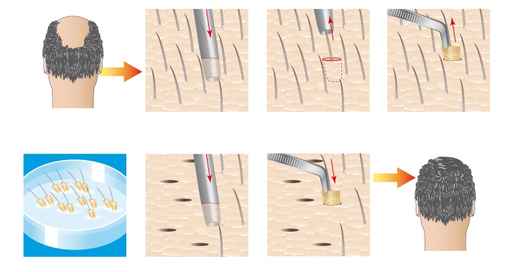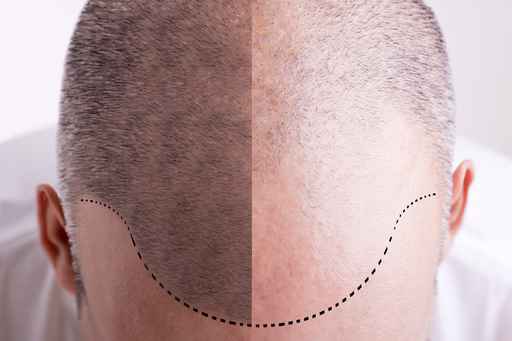FUE METHOD
The other method is called strip harvest. FUE harvesting, individual follicular units are extracted from the hair restoration donor area of the patient. This differs from strip-harvesting which is in strip harvesting, a strip of skin is removed from the donor area and then dissected into many individual follicular units. The follicular units obtained by either method are the basic structure blocks of follicular unit transplantation (FUT).Nowadays FUE method has grown into advanced FUE. The main difference is that advanced FUE enables the creation of larger donor area by harvesting follicles from the back side of the head.

Healthy follicular unit
The healthy follicular units upon extraction from the scalp is one of the key of successful hair transplantation. When follicular units are transected in the extraction process, there is a greater likelihood that they will not survive the transplant, and the hair transplant will fail. Significant efforts have been made to reduce the rate of transection in FUE procedures. The skill of the performer and the medical team, and the type of instrumentation used, are major factors in the ultimate yield and viability of the follicular units. Graft survival is also affected by time out of the scalp and exposure to air. Different methods have been proposed to further improve graft survival affected by these later factors mainly by removing capture devices and adding or increasing time on ice.
Comparisons follicular unit transplantation methods
Follicular unit extraction generally has a quick patient recovery period and significantly lower post-operative discomfort than follicular unit transplantation.
However, with FUE, the follicles are harvested from a much greater area of the donor area compared to FUT, estimated to be eight times greater than that of strip excision so requires patients to have their hair cut in a much larger donor area.
© Fue and Hair & Hair Transplantation 2015 | Designed by Crea Mind

 Türkçe
Türkçe English
English العربية
العربية